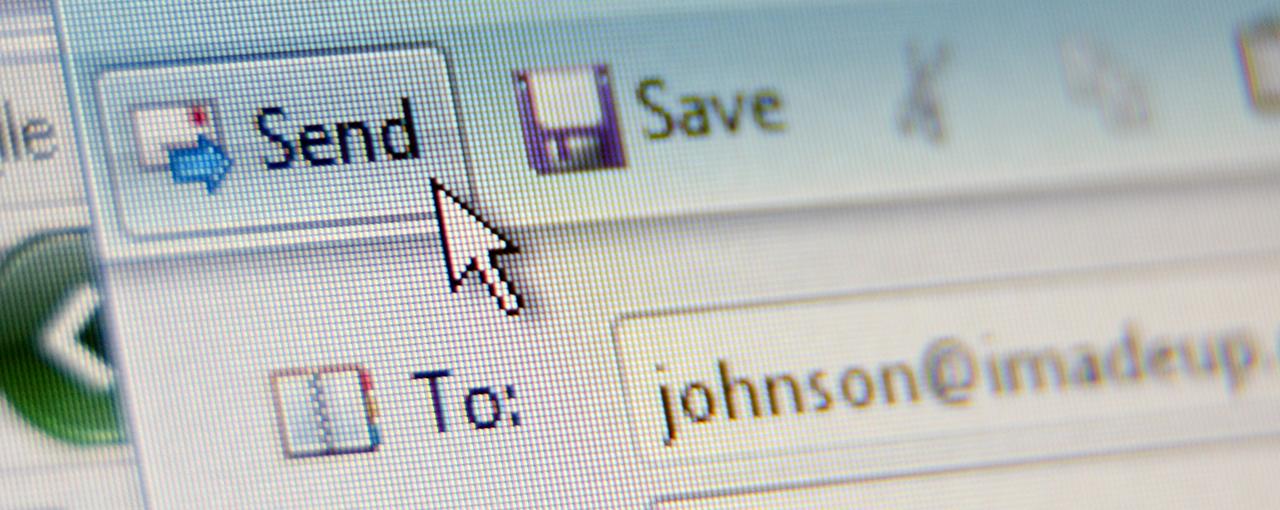
Today, applying for jobs by email is more often the rule, not the exception.
For some job seekers this may be unfamiliar and confusing, while for others, contacting employers by email is relatively easy and an integral part of their job search process.
If you don’t know where or how to start, these 10 basic rules will help you maintain professionalism in your email correspondence. Because we live in a world filled with texting, tweets and instant messaging, it's easy to fall into communication that blurs the lines between personal and professional. For those of you who've already applied for work via email, a review of these rules will be a good refresher for all professional emails.
Rule #1 - Choose a professional name for your email address.
Prevent your application from getting flagged as spam or deleted by emailing from an address that includes your name, like jsmith@email.com, for example. If you use an email address that may appear silly to employers, such as one that includes a nickname or an inside joke, open a new email account and use your name or a form of it as your job-search email address.
Rule #2 - Attach your resumé before compiling your email.
Some job seekers are so focused on sending their email that they forget to attach their resumé. In most cases, employers will not contact the job seeker to request their resumé. Make a habit of attaching your resumé and portfolio documents, if applicable, first to avoid this embarrassing oversight.
Rule #3 - Always write something in the subject line and body of the email.
Sending an email with a blank subject line with only a resumé attached will likely be deleted. In the body of the email, include a brief introduction of yourself, state how you will be a fit for the position and end with a closing statement that outlines the next steps. You can use "sincerely" or another universal sign-off to close the email.
Rule #4 – Follow the employer’s instructions.
Read the employer’s instructions for applying for the job carefully and follow them. Pay attention to details, such as the requested file formats, such as PDF or .doc, for instance.
Rule #5 - Start off with a greeting or salutation.
Start off with ‘Dear Mr. / Miss / Mrs / Ms. and last name.' Do not use the hiring manager's first name only. If you are uncertain about the name or gender of the hiring manager, research the company’s website or contact the organization and inquire as to the proper title. If the information isn't available, address the email to the Hiring Manager or Human Resources Department.
Rule #6 - Use plain language with short, concise paragraphs.
The body of the email needs to be easy to read with plenty of white space. Get to the point quickly and use proper punctuation and grammar. Avoid stylized fonts, too much colour, jargon, abbreviations, acronyms and text shorthand (i.e. plz, thanx). Do not use emoticons or emojis.
Rule #7 - Include an email signature.
An email signature includes your first name, last name, email address, phone and LinkedIn profile (optional).
Rule #8 - Proofread and spell check.
Like your resume, your email needs to be free of errors. Use spell check but do not depend on it. Proofread your application and cover email carefully and double check the spelling of names.
Rule #9 - Send a test email.
Send a test email to yourself or a friend with your resumé attached. If everything looks okay, click SEND.
Rule #10 - Check your email regularly and reply within 24 hours.
It is not uncommon for employers to move on to another candidate if a reply is not received in a timely manner.
Remember, first impressions are important and using these rules for email will help you show your professionalism in your job search.
Tina Hurd is a career advisor at the Westside WorkBC.
If you’re looking for services and support in your job search, visit one of our WorkBC centres to get started. All our employment services are FREE.

